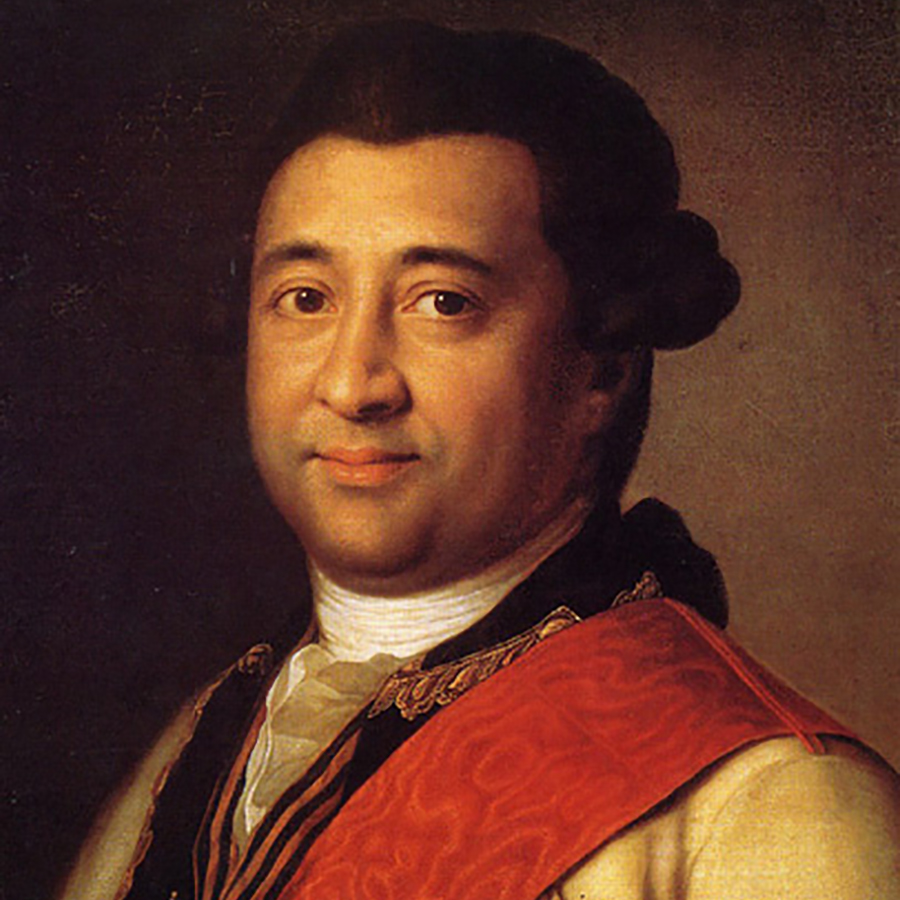Russian military leader, Chief Commander of the Kherson, and General-in-Chief, Ivan Hannibal, was the eldest of Abram Hannibal’s eleven children with Christine Regina von Sjöberg and the great-uncle of Alexander Pushkin, regarded as the father of Russian literature. Enamored of his African heritage, Pushkin wrote a novel about Abram Hannibal which was published incomplete in 1837 as The Negro of Peter the Great.
Ivan Hannibal was born on June 5, 1735, on the estate of Karjaküla, near Reval (now Tallinn) in Estonia. He was drafted into the military when he was seven years old. In 1748, he joined the Knight’s Academy’s gentry land cadet corps. The Knight’s Academy contained a theater, offering a thorough education in the humanities and arts. The corps teachers underwent significant alteration throughout that time. The ideal of Versailles replaced the ideal of the Dutch shipyard.
Beginning in 1757, Ivan Hannibal served as an artillery lieutenant and participated in a marine expedition from Kronstadt to the Mediterranean marine in 1770 after being appointed Commander of Naval Artillery in 1769. The Russian squadron made many fruitless attempts to besiege the Turkish citadel of Navarino (now Greece). The command then tasked Ivan Hannibal with capturing the castle. Ivan took control of the castle following a 15-day siege, and on April 10, 1770, he was appointed its commandant and awarded the Order of St. George, third degree, in recognition of the bravery he showed throughout the conflict and his deft direction of the soldiers.
Ivan Hannibal also made a name for himself in the Chesme combat, which was fought in the Aegean Sea two months later. As commander of the combined Russian squadron’s artillery, he ordered the construction of four fire ships. The largest Ottoman ship was the first to catch fire on the evening of June 26, 1770, and other ships soon followed. Ivan Hannibal oversaw the bombardment ship “Grom” artillery fire, but he was also among those who narrowly fled the exploding Russian flagship “Estafiy.” Hannibal was promoted to Major-General and given the order of St. George of the Third Degree by the squadron leadership for his heroic deed.
After a peace treaty was reached between Russia and the Ottoman Empire, Hannibal stayed in Italy and spent five years working as consul in Pisa. In order to transfer products to St. Petersburg, he managed the purchase of artwork, books, and other items in Europe. On July 7, 1776, the highest level of the Russian Empire promoted Ivan to Commander General of Naval Artillery. Ivan had already returned to his residence on Vasilevsky Island in St. Petersburg in the summer of 1777, which afterward served as the inn for visiting foreign nobility. Hannibal was presented to the Russian admiralty board in the same year, 1777, and on July 25, 1778, he was named the Chief Commander of the Kherson stronghold. On November 20, 1778, Empress Catherine the Great received a report from Ivan that included a design for a new city on the Dnepr and gave him the authority to buy ship wood. After being personally awarded the Alexander Ribbon and receiving 21,800 hectares of land as a gift close to Kherson from Empress Catherine the Great, he retired in 1784 with the title of General-in-Chief.
On October 10, 1801, Ivan Hannibal died from a fever in St. Petersburg. He had no dependents.

